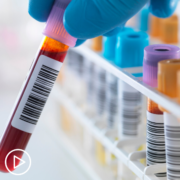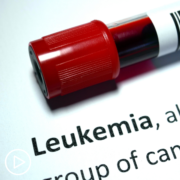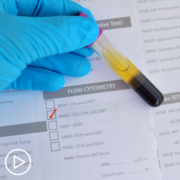How Is CLL Staged?
How is CLL staged? from Patient Empowerment Network on Vimeo.
Chronic lymphocytic leukemia has various methods of staging, but what are they? Watch to learn the different methods that are used for CLL staging and how CLL risk is determined.
Related Programs:

|

|

|
Transcript:
Chronic lymphocytic leukemia (CLL) specialists have used three different staging systems to assist them in forecasting disease progression and creating suitable treatment plans for patients. Depending on where or when a CLL patient has been diagnosed and monitored, their specialist(s) may have used the Rai staging system, Binet staging system, and/or CLL International Prognostic Index (CLL-IPI).
Dr. Kerry Rogers:
“So, unlike most cancers, where CLL is staged with CT scans or PET scans, the staging for CLL is actually remarkably simple, and I really like this because it limits the amount of testing you have to do for people, especially the people that might be just monitored for their CLL or observed. You don’t wanna put them through a lot of intensive testing they don’t need. So, the only two things you need to properly stage CLL are a complete blood count and a good physical exam.”
The Rai staging system uses the three stages of low risk, intermediate risk, and high risk to categorize patients. While the Binet staging system uses the three stages of A stage, B stage, and C stage.
In 2016, the CLL-IPI staging system was initiated worldwide to provide a unified staging system for CLL patients.
In CLL-IPI staging, the following prognostic factors were identified, including:
- TP53 deleted or mutated – assigned 4 points
- Unmutated IGHV – assigned 2 points
- Serum beta-2 microglobulin concentration greater than 3.5 mg/L – assigned 2 points
- Rai Stage I – V or Binet Stage B – C – assigned 1 point
- Patient age over 65 years – assigned 1 point
The point totals from the five factors in CLL-IPI staging correspond to the following recommendations:
- Low risk – 0 to 1 point; no need to treat
- Intermediate risk – 2 to 3 points; no need to treat unless the patient is highly symptomatic
- High risk – 4 to 6 points; treatment unless the patient experiences no symptoms
- Very high risk – 7 to 10 points; If the decision is made to treat, use novel agents or treatment in a clinical trial instead of chemotherapy






